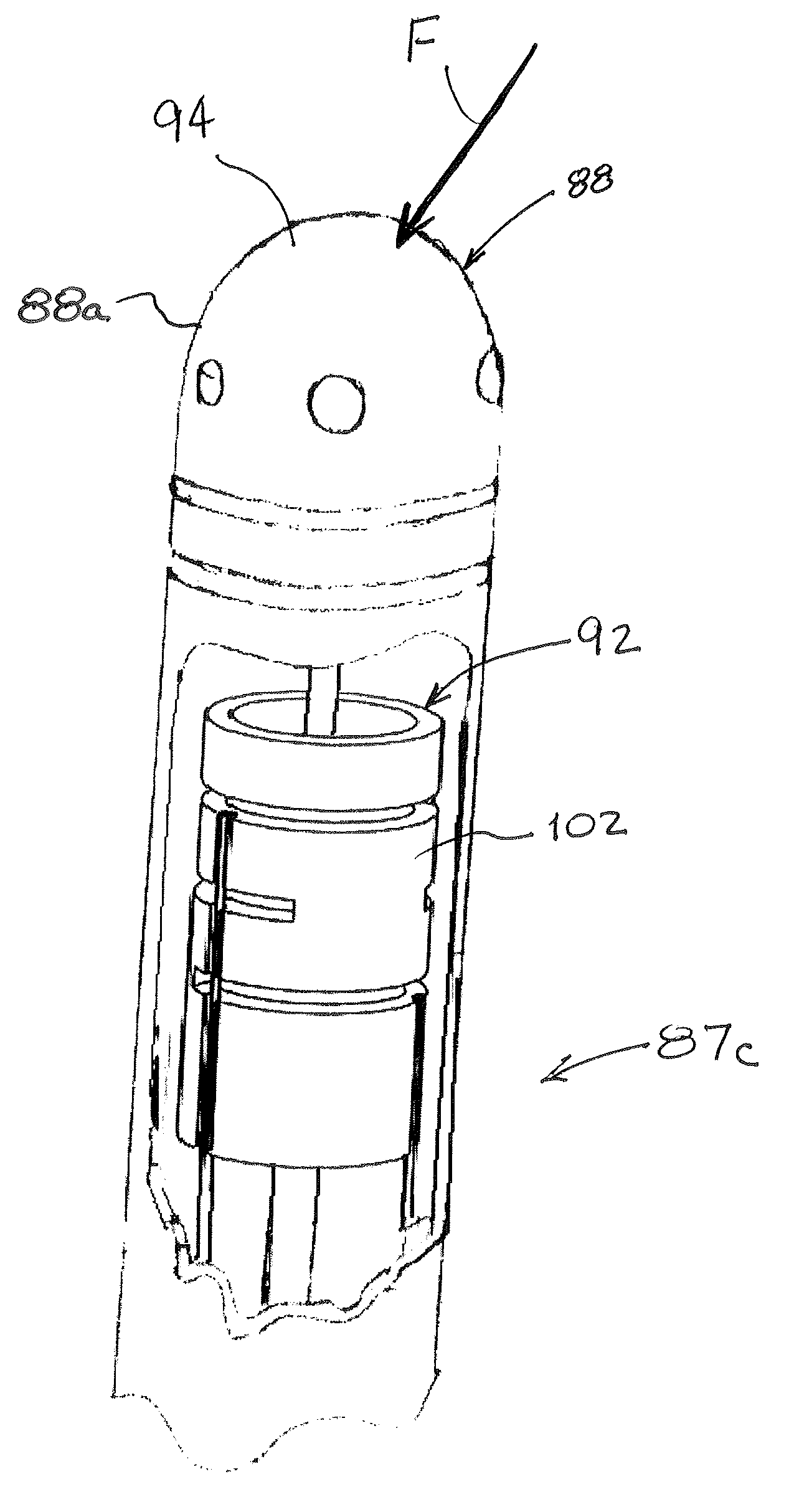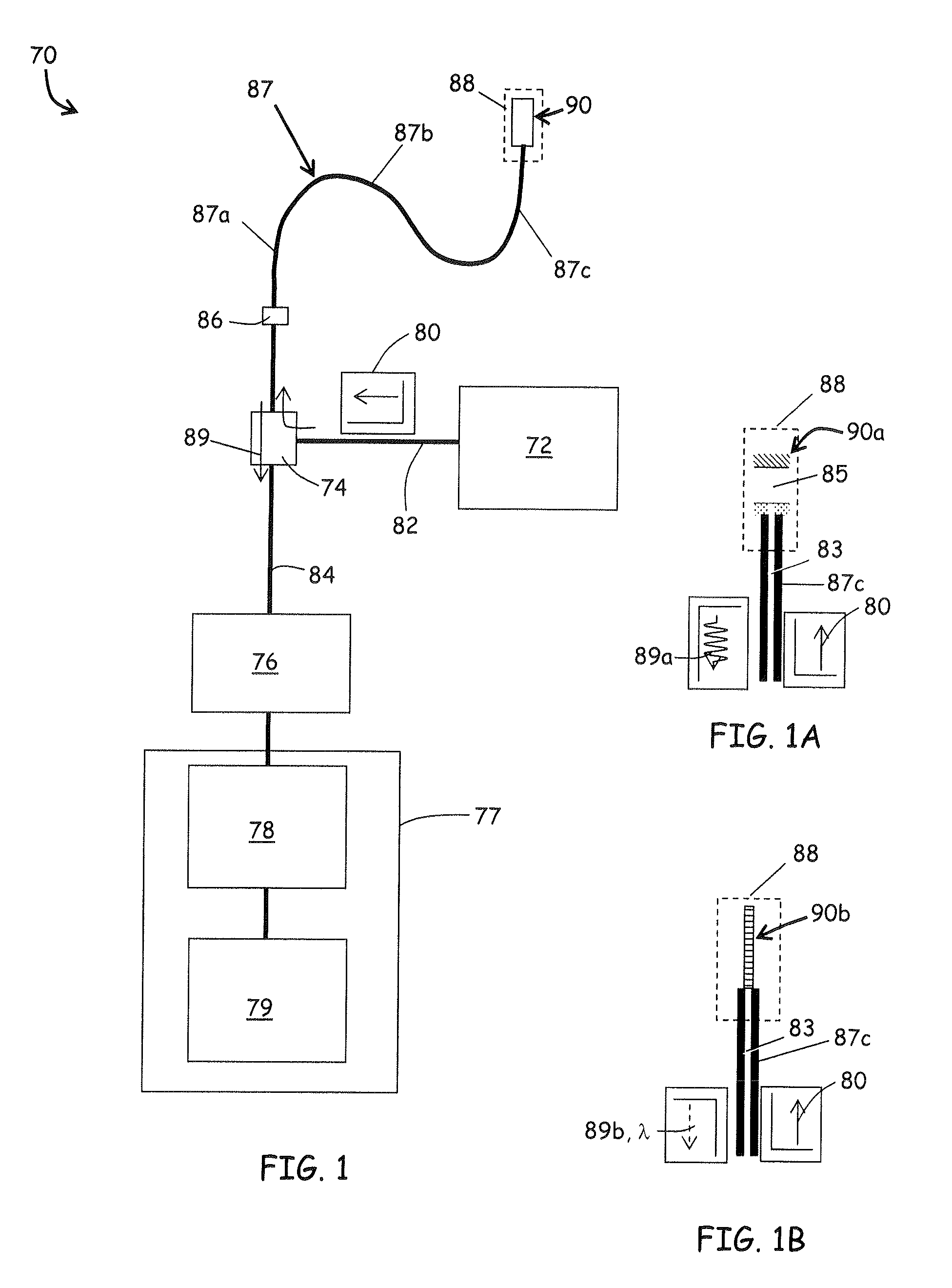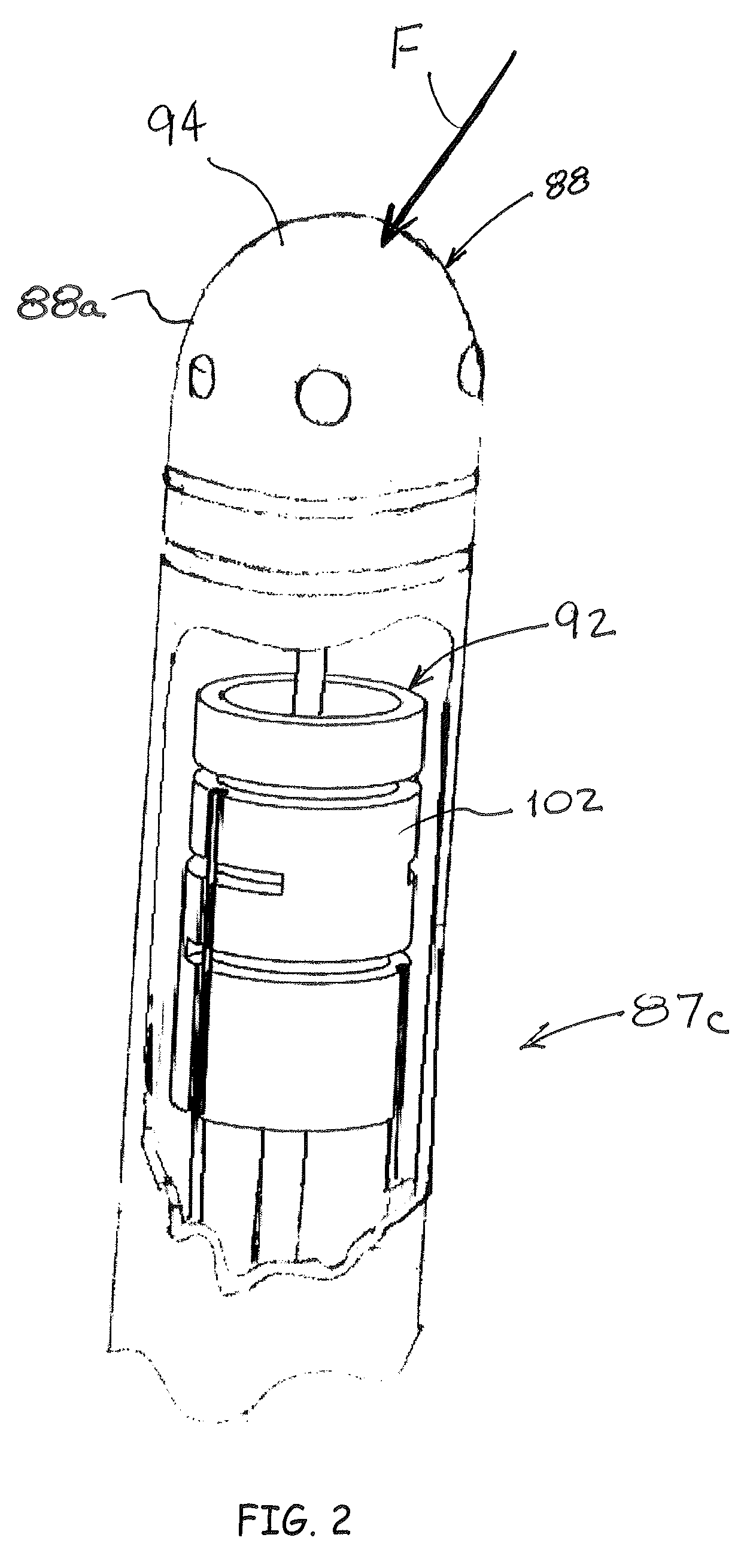Triaxial fiber optic force sensing catheter
a fiber optic and force sensing technology, applied in the direction of force measurement by measuring optical property variation, force/torque/work measurement apparatus, instruments, etc., can solve the problems of time-consuming, manual feedback, complicated mapping procedure, etc., to improve the sensitivity of force resolution and reduce the profile over existing devices
- Summary
- Abstract
- Description
- Claims
- Application Information
AI Technical Summary
Benefits of technology
Problems solved by technology
Method used
Image
Examples
Embodiment Construction
[0043]Referring to FIG. 1, an embodiment of a strain sensing system 70 is depicted in accordance with the invention. The strain sensing system 70 may comprise an electromagnetic source 72, a coupler 74, a receiver 76, an operator console 77 operatively coupled with a microprocessor 78 and a storage device 79. The electromagnetic source 72 outputs a transmitted radiation 80 of electromagnetic radiation that is substantially steady state in nature, such as a laser or a broadband light source. A transmission line 82 such as a fiber optic cable carries the transmitted radiation 80 to the coupler 74, which directs the transmitted radiation 80 through a transmitting / receiving line 84 and through a fiber optic element 83 (FIG. 1A) contained within a flexible, elongate catheter assembly 87 to a fiber optic strain sensing element 90. The fiber optic element 83 of the catheter assembly 87 and transmitting / receiving line 84 may be coupled through a connector 86 as depicted in FIG. 1.
[0044]The ...
PUM
| Property | Measurement | Unit |
|---|---|---|
| flexible | aaaaa | aaaaa |
| distance | aaaaa | aaaaa |
| area | aaaaa | aaaaa |
Abstract
Description
Claims
Application Information
 Login to View More
Login to View More - R&D
- Intellectual Property
- Life Sciences
- Materials
- Tech Scout
- Unparalleled Data Quality
- Higher Quality Content
- 60% Fewer Hallucinations
Browse by: Latest US Patents, China's latest patents, Technical Efficacy Thesaurus, Application Domain, Technology Topic, Popular Technical Reports.
© 2025 PatSnap. All rights reserved.Legal|Privacy policy|Modern Slavery Act Transparency Statement|Sitemap|About US| Contact US: help@patsnap.com



